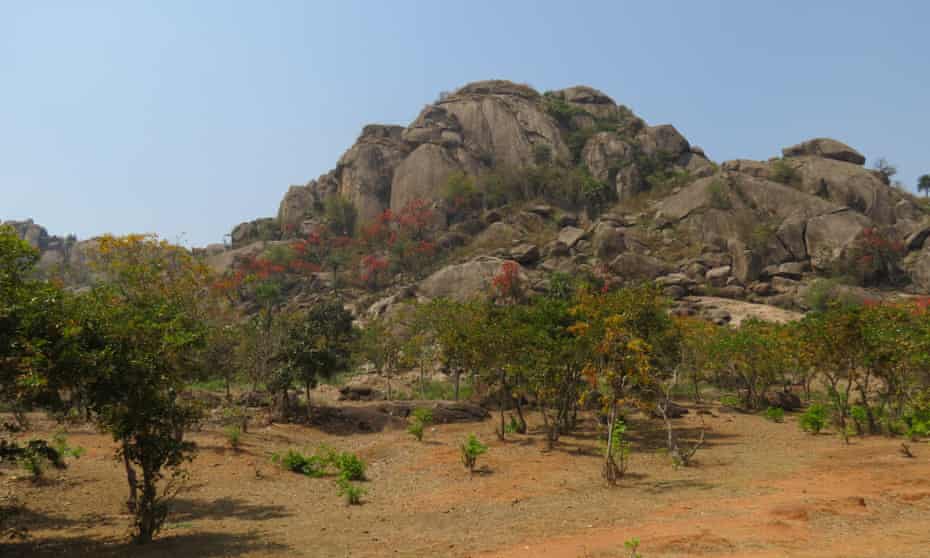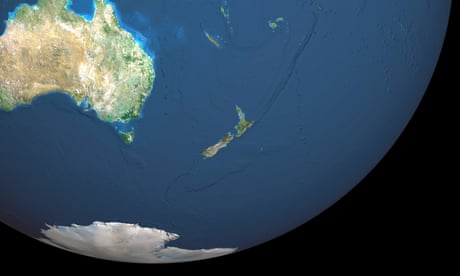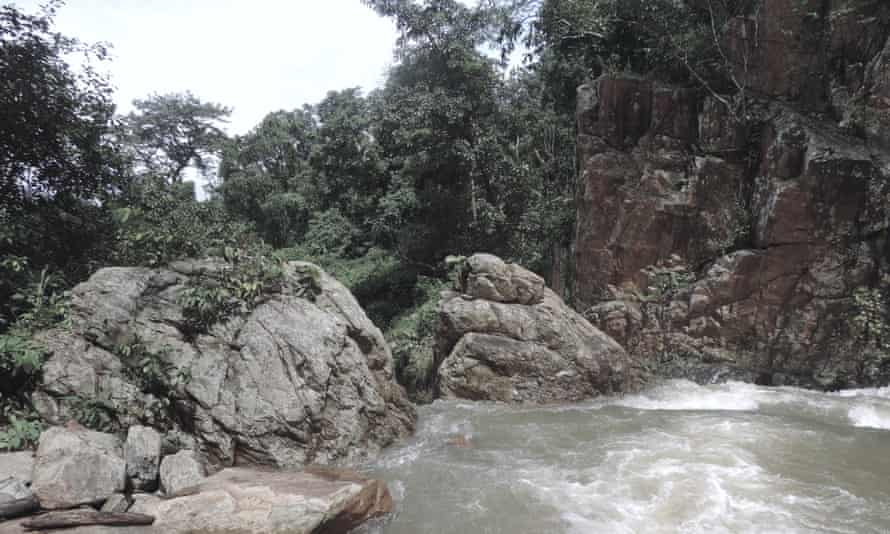Ancient rock forms suggest world’s first stable cratons rose above sea level more than 3bn years ago

Granitoid rocks of the Singhbhum craton in India which are more than 3bn years old.
Photograph: Subham Mukherjee / University of Delhi
Donna Lu
@donnadlu
Mon 8 Nov 2021
The Earth’s first continents rose out of the ocean 700m years earlier than previously thought, a new analysis of ancient rocks suggests.
Researchers who have studied rock sediments in eastern India believe the discovery could explain an increase in oxygen in the atmosphere, and the formation of glaciers, during that period of Earth’s history.

Earth may have been a 'water world' 3bn years ago, scientists find
Analysis of sediments from Singhbhum, near Kolkata, suggests the first stable continents – known as cratons – started to emerge above sea level between 3.3 to 3.2bn years ago.
Dr Priyadarshi Chowdhury of Monash University, the study’s lead author, said the team realised the rocks must have formed on land because of the presence of features such as ripple marks – similar to the way wind and waves leave marks on a sandy beach.
“We realised these were ancient riverine [rocks], formed in rivers and estuaries,” he said.
Chowdhury said the first continents likely formed before the existence of plate tectonics, which is the major driver today for increases in the elevation of land masses.
“We have plate tectonics today to control the elevation. When two continents’ [plates] collide, you form Himalayas, you form Alps,” he said. “That wasn’t the case 3bn years [ago].”

Donna Lu
@donnadlu
Mon 8 Nov 2021
The Earth’s first continents rose out of the ocean 700m years earlier than previously thought, a new analysis of ancient rocks suggests.
Researchers who have studied rock sediments in eastern India believe the discovery could explain an increase in oxygen in the atmosphere, and the formation of glaciers, during that period of Earth’s history.

Earth may have been a 'water world' 3bn years ago, scientists find
Analysis of sediments from Singhbhum, near Kolkata, suggests the first stable continents – known as cratons – started to emerge above sea level between 3.3 to 3.2bn years ago.
Dr Priyadarshi Chowdhury of Monash University, the study’s lead author, said the team realised the rocks must have formed on land because of the presence of features such as ripple marks – similar to the way wind and waves leave marks on a sandy beach.
“We realised these were ancient riverine [rocks], formed in rivers and estuaries,” he said.
Chowdhury said the first continents likely formed before the existence of plate tectonics, which is the major driver today for increases in the elevation of land masses.
“We have plate tectonics today to control the elevation. When two continents’ [plates] collide, you form Himalayas, you form Alps,” he said. “That wasn’t the case 3bn years [ago].”

Sandstone horizons that are 3.1bn years old and formed atop the crust of the Singhbhum craton soon after it emerged above sea level.
Photograph: Subhajit Roy / Monash University
The scientists instead hypothesise that the earliest continents rose out of the global ocean covering earth after 300 to 400m years of continuous volcanic activity.
Chowdhury said the Singhbhum craton may have been formed from a pile up of lava over time, so that the crust – approximately 50km deep – “becomes so thick and it just floats up above the water … like an iceberg floating on water”.
The team extracted tiny grains of a mineral known as zircon from the Singhbhum sediments. By shooting lasers at the zircon, and then measuring the relative amounts of elements released, the team were able to estimate the age of the rocks.
Geological similarities have linked the Singhbhum craton to cratons in South Africa and Western Australia.
The researchers believe weathering of the cratons would have led to nutrient runoff, supplying the ocean with phosphorus and other building blocks for early life.
“Once you create land, what you also create is shallow seas, like lagoons,” Chowdhury added, accelerating the growth of oxygen-producing life forms that may have boosted oxygen in the atmosphere and ocean.
The emergence of early continents would also have drawn carbon dioxide down from the atmosphere, leading to localised pockets of cold climate and the formation of glaciers, Chowdhury said. “This was the first step towards making the earth more habitable.”
The study was published in the journal Proceedings of the National Academy of Sciences.
The scientists instead hypothesise that the earliest continents rose out of the global ocean covering earth after 300 to 400m years of continuous volcanic activity.
Chowdhury said the Singhbhum craton may have been formed from a pile up of lava over time, so that the crust – approximately 50km deep – “becomes so thick and it just floats up above the water … like an iceberg floating on water”.
The team extracted tiny grains of a mineral known as zircon from the Singhbhum sediments. By shooting lasers at the zircon, and then measuring the relative amounts of elements released, the team were able to estimate the age of the rocks.
Geological similarities have linked the Singhbhum craton to cratons in South Africa and Western Australia.
The researchers believe weathering of the cratons would have led to nutrient runoff, supplying the ocean with phosphorus and other building blocks for early life.
“Once you create land, what you also create is shallow seas, like lagoons,” Chowdhury added, accelerating the growth of oxygen-producing life forms that may have boosted oxygen in the atmosphere and ocean.
The emergence of early continents would also have drawn carbon dioxide down from the atmosphere, leading to localised pockets of cold climate and the formation of glaciers, Chowdhury said. “This was the first step towards making the earth more habitable.”
The study was published in the journal Proceedings of the National Academy of Sciences.
No comments:
Post a Comment